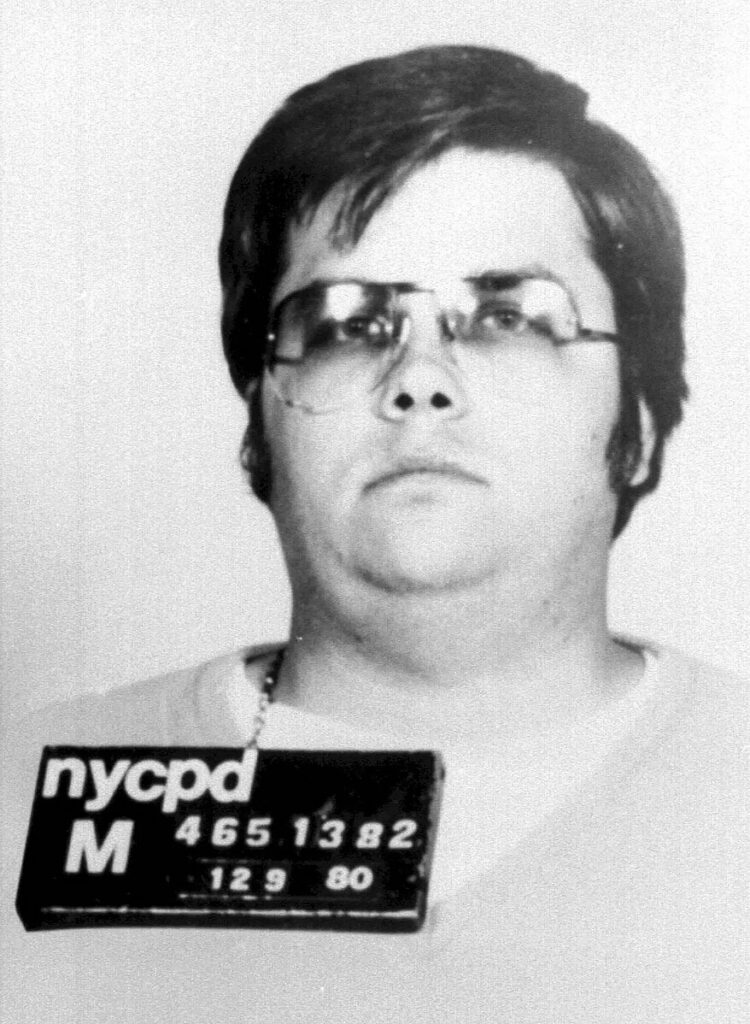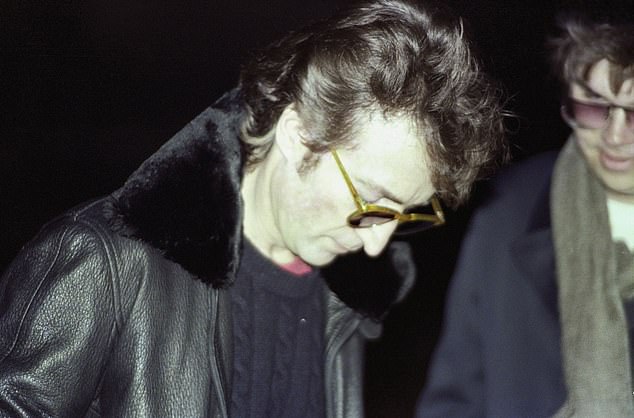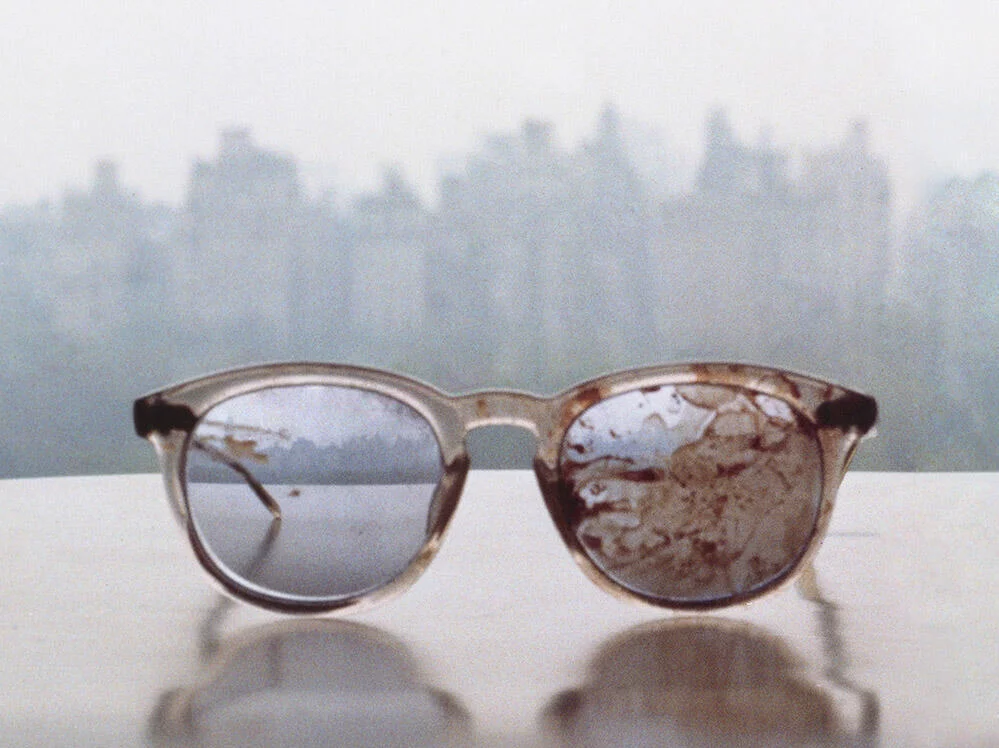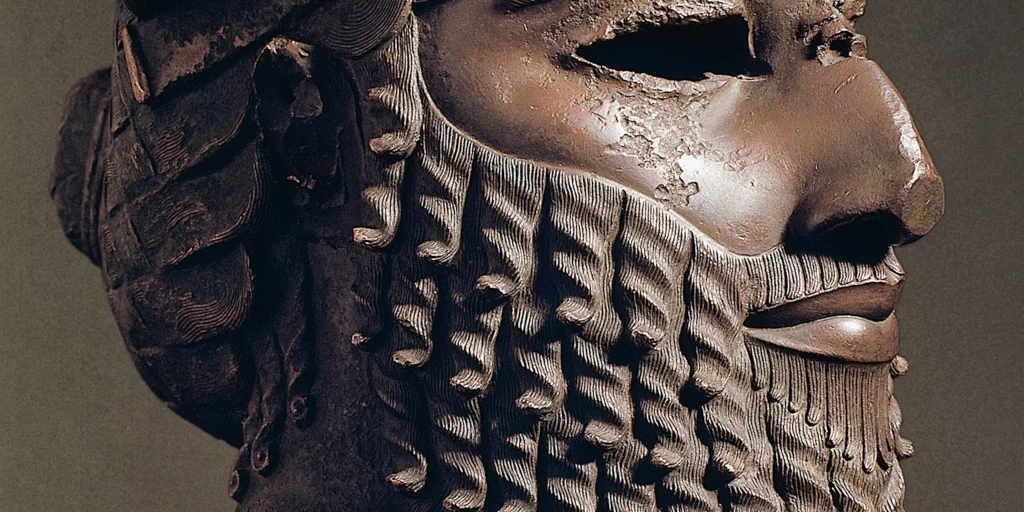For millions of people around the world, December 8, 1980, will forever be remembered as one of the darkest days in modern history. It was the day former Beatle John Lennon was gunned down outside his New York City apartment building by a man named Mark David Chapman.
Chapman was a former Beatles fan who once idolized Lennon. But he grew to despise him for his Bohemian lifestyle, anti-establishment statements, and provocative song lyrics. When taken into custody he made no effort to defend what he’d done, saying killing Lennon was the “Will of God.”
Even after decades, fans find it impossible to fathom the killing of a man so revered for his musical genius; so loved for his message of peace and love. Speculation as to what Lennon could have accomplished in later life had he lived, only adds to the pain millions still feel.

A Turbulent Youth
Mark David Chapman was born on May 10, 1955, in Fort Worth, Texas, to US Air Force Sergeant David Chapman and his wife Diane. He grew up in Decatur, Georgia. When Mark was seven years of age his sister, Susan, was born.
Relatively few details of his childhood are known except that he alleges to have lived in constant fear of his father. He says his father physically abused his mother and never showed him the slightest affection. He claims that as a boy he withdrew into a fantasy world where he had god-like power over a family of “little people” who lived in the walls of his bedroom.
Mark attended Columbia High School in Decatur, Georgia. By the age of 14, he was using drugs. He showed no interest in education. The friends he attracted were of two types: the rebellious and the religious. Often bullied, he once ran away to Atlanta, Georgia where he lived on the streets for two weeks.
Obsession and Shame
Like many teens of the era, Mark developed an obsession with the Beatles and their music; especially John Lennon. And like many teens of the era, Mark learned a few chords on the guitar to emulate his idols. But Mark soon came to despise himself for this obsession.
In 1971, Mark became infatuated with Christianity and he became a born-again Christian. Therefore, Lennon’s 1966 statement that the Beatles were more popular than Jesus, was considered blasphemy. Mark began to equate Lennon with the devil and loathed himself for being taken in.
At age 16, Mark met his first girlfriend, Jessica Blankenship. He began working as a summer-camp counselor at the South DeKalb County, Georgia YMCA. After graduating high school, Mark left home and moved to Chicago. There, he played guitar in churches and Christian night spots; basking in the attention it garnered him.
Following a trip to Lebanon, where he trained as a counselor for the Christian outreach organization World Vision International, he relocated to Fort Chaffee, Arkansas. He counseled Vietnamese refugees at a resettlement camp there.

A Fascination With Death
A short time later, Mark enrolled at Covenant College. This was an evangelical Presbyterian liberal arts college in Lookout Mountain, Georgia, where his girlfriend Jessica Blankenship was a student.
Soon after arriving, however, Mark had sex with another student. He became so overwhelmed with guilt that he began neglecting his studies and contemplated killing himself.
When Blankenship ended their relationship because of the cheating, Mark dropped out of college (after just one semester. He returned to work at the Fort Chaffee resettlement camp.
But it quickly became apparent to his fellow counselors that his attitude had changed. Soon after, Mark instigated an altercation with his supervisor that resulted in his leaving.
Hawaii, Depression, Marriage
In 1977, at the age of 22, Mark moved to Hawaii, where he became more and more fascinated with suicidal ideation.
After a failed attempt to kill himself, he was hospitalized at a mental facility and diagnosed with depression. Later that year he began working at that facility. First in maintenance, then in the print shop.
Two years later, Mark met and married travel agent Gloria Abe. She grew up on Oahu, and they met after she’d arranged a trip for him to Asia.
After marriage, he found work as a security guard at a hospital. But he was fired after an argument with a supervisor. He then took another job as a security guard—but quit within a few months.
The Catcher in the Rye
At the urging of a friend, Mark read the J.D. Salinger novel, The Catcher in the Rye. He immediately identified with the story’s 16-year-old disillusioned protagonist, Holden Caulfield. (Caulfield condemns the “phoniness” of the adult world after being expelled from prep school).
Increasingly empathetic to the character, Mark decided that there were several celebrity phonies who didn’t deserve to go on living. Among these were Johnny Carson, Elizabeth Taylor, Paul McCartney, and John Lennon—whom he decided was nothing but a fraud who valued money and fame over music.
By 1980, Mark’s depression, fascination with suicide, and obsessive thoughts were spiraling out of control; his mind was fixated on killing John Lennon. He began drinking heavily and, according to his wife, became increasingly physically abusive toward her.
In October of that year after a trip to New York City, Mark confessed to his wife that he’d gone to New York to kill Lennon, but couldn’t bring himself to do it. She assumed that meant he’d changed his mind.
Subterfuge and Misdirection
In November of 1980, John Lennon released what would be his final LP while alive, Double Fantasy. This brought the famous Beatle out of his long, self-imposed seclusion in the Dakota, Lennon’s exclusive Manhattan apartment building.
In early December, Chapman traveled to New York City again. He told his wife that he wanted to “take a trip to clear his head,” to grow up “as an adult,” to “be a better husband and a better person.”
He said he’d thrown the gun he’d planned to use to kill Lennon into the ocean. He said he no longer wished the former Beatle dead.
The Shots Heard Around the World
On December 6, 1980, Mark Chapman bought a copy of Lennon’s Double Fantasy at a New York City record shop then camped outside the Dakota. Two days later, album in hand, Chapman watched as Lennon exited the building at about 5:50 pm on his way to a recording session. He then headed for his waiting limo.
As captured by an amateur photographer whose photo is now famous, a smiling Lennon stopped to autograph the album cover for Chapman. But then Chapman did something that in retrospect was an indication of an ulterior motive. He placed his prized autographed album atop a nearby planter and walked away.
Around 10:30 that evening, Lennon returned from the studio–and Chapman was waiting.
As Lennon and his wife Yoko Ono stepped out of the limo, Chapman raised his gun and fired several shots. He hit Lennon four times in the back and shoulder.
When New York City Police officers arrived at the murder scene they discovered Chapman calmly leafing through a copy of The Catcher in the Rye. He offered no resistance. One hour later, Lennon was pronounced dead at nearby Roosevelt Hospital.
When news of Lennon’s death hit the media, Chapman’s wife knew instantly what her husband had done.
The Trial
Despite the potential for histrionics, on June 22, 1981, Mark David Chapman pleaded guilty to killing John Lennon outside the Dakota apartment building, in a closed court. This went against his attorney’s advice to allow a plea of insanity. He told his defense attorneys that his decision to plead guilty was based on what he had decided was the “will of God.”
Despite his guilty plea, defense attorney Jonathan Marks argued that a sane man could not have followed through with such a heinous act. He claimed that Chapman was “delusional and psychotic.” He insisted that a mental aberration had prevented him from knowing or understanding what he had done.
The prosecution, D.A. Allen F. Sullivan, however, maintained that Chapman had “committed a deliberate, premeditated execution of John Lennon and acted in a cool, calm and calculated manner in killing Mr. Lennon by shooting him several times with a .38-caliber pistol.”
Chapman was asked a series of questions by Justice Edwards and D.A. Sullivan about how he had killed Lennon. The D.A. asked why he used hollow-point bullets. To which Chapman responded, “To ensure Lennon’s death.”
(It should be noted that under the dark trousers and dark blue shirt Chapman wore to the court that day, he wore a bulletproof vest issued by the New York Correction Department. They were convinced that Lennon’s murderer would himself be murdered.)
The Sentencing
On August 24, 1981, Chapman was sentenced to 20-years-to-life for the murder of John Lennon; with ongoing psychiatric treatment ordered.
Prior to sentencing, Chapman was asked if he had anything he’d like to say to the court, at which time he rose and read a passage from The Catcher in the Rye:
“I keep picturing all these little kids playing some game in this big field of rye and all. Thousands of little kids, and nobody’s around–nobody big, I mean–except me. And I’m standing on the edge of some crazy cliff. What I have to do, I have to catch everybody if they start to go over the cliff–I mean if they’re running and they don’t look where they’re going I have to come out from somewhere and catch them. That’s all I do all day. I’d just be the catcher in the rye and all.”
J.D. Salinger
Incarceration
Chapman was sent to Attica Correctional Facility outside Buffalo, New York. He was held in a solitary confinement unit for at-risk prisoners. This was in part due to concerns that he might be killed by Lennon fans in the general population.
In February of 1982, Chapman refused to eat for 26 days. The New York State Supreme Court authorized the state to force-feed him. Central New York Psychiatric Center director Martin Von Holden said Chapman subsequently agreed to take liquid nutrients—but refused to eat with other inmates.
Interestingly, since the beginning of this horrendous ordeal, Chapman’s wife Gloria remained devoted to her husband. Every year since first permitted, Chapman and Gloria have enjoyed conjugal visits, during which the two engage in sex, eat pizza, and discuss the Bible ministry they’ve organized inside the prison.
The Media
For his first six years behind bars, Chapman refused to grant interviews. But he ultimately broke his silence by supplying audiotaped interviews to renowned journalist Jack Jones. Jones used them to write the investigative book, Let Me Take You Down: Inside the Mind of Mark David Chapman, in 1992.
In recorded statements, Chapman stated that he regretted the murder. He said he did not want to give the impression that he killed Lennon for fame and notoriety. This was an abject lie considering he’d admitted the opposite to both his wife and Jack Jones.
On December 4, 1992, Chapman gave his first TV interview on ABC’s 20/20 with Barbara Walters, and on December 17, 1992, appeared on Larry King Live. Chapman has granted permission for his life to be dramatized in two films: The Killing of John Lennon (2006) and Chapter 27 (2007).

Parole
In 2000, Chapman became eligible for parole, contending that he is no longer a danger to society. Disbelieving him, the parole board denied his release.
Since 2000 he has been eligible to apply for parole 11 more times; 11 more times, parole was denied. At his 12th parole hearing, the parole board stated for the record that they were denying parole “due to his action leaving the world recovering from the void of which he created.”
Chapman will again have an opportunity to convince authorities of his mental stability in February, 2024.
A Healing Place for the World
On March 26, 1981, the New York City Council adopted legislation introduced by Council member Henry J. Stern on December 18, 1980. This designated the part of the City stretching from 71st to 74th streets as “Strawberry Fields.” It opened to the public on October 9, 1985, on what would have been John Lennon’s 45th birthday.
This memorial to Lennon has seen a vigil of fans of all ages from all corners of the world each October 9. Fans of his music and believers in his vision of world peace. And each December 8th, thousands gather to mourn his death—while cursing the name Mark David Chapman.
References
Britannica, “Mark David Chapman,” Mark David Chapman | Biography & Facts | Britannica
ABCNews, “John Lennon Killer Also Considered Shooting Johnny Carson, Elizabeth Taylor,” https://abcnews.go.com/Entertainment/john-lennon-killer-mark-david-chapman-considered-killing/story?id=11658475
Britannica, “The Catcher in the Rye,” The Catcher in the Rye | Summary, Analysis, Reception, & Facts | Britannica
HawaiiNewsNow.com., “Becoming ‘Mrs. Mark David Chapman’: A killer’s wife explains why she stayed,” https://www.hawaiinewsnow.com/2020/12/08/becoming-mrs-mark-david-chapman-killers-wife-explains-why-she-stayed/
UVALAW, “Mark David Chapman on Trial for the Murder of John Lennon,”
https://archives.law.virginia.edu/dengrove/writeup/mark-david-chapman-trial-murder-john-lennon
NYTimes.com., “CHAPMAN, IN A CLOSED COURTROOM, PLEADS GUILTY TO KILLING OF LENNON,” https://www.nytimes.com/1981/06/23/nyregion/chapman-in-a-closed-courtroom-pleads-guilty-to-killing-of-lennon.html
CentralPark.org., “Vigil for John Lennon Today at Strawberry Fields,” https://centralpark.org/vigil-for-john-lennon-today-at-strawberry-fields/
New York Post, “Wife of John Lennon’s killer visits him for prison sex and pizza,” https://nypost.com/2014/12/17/wife-opens-up-about-being-married-to-john-lennons-killer/

